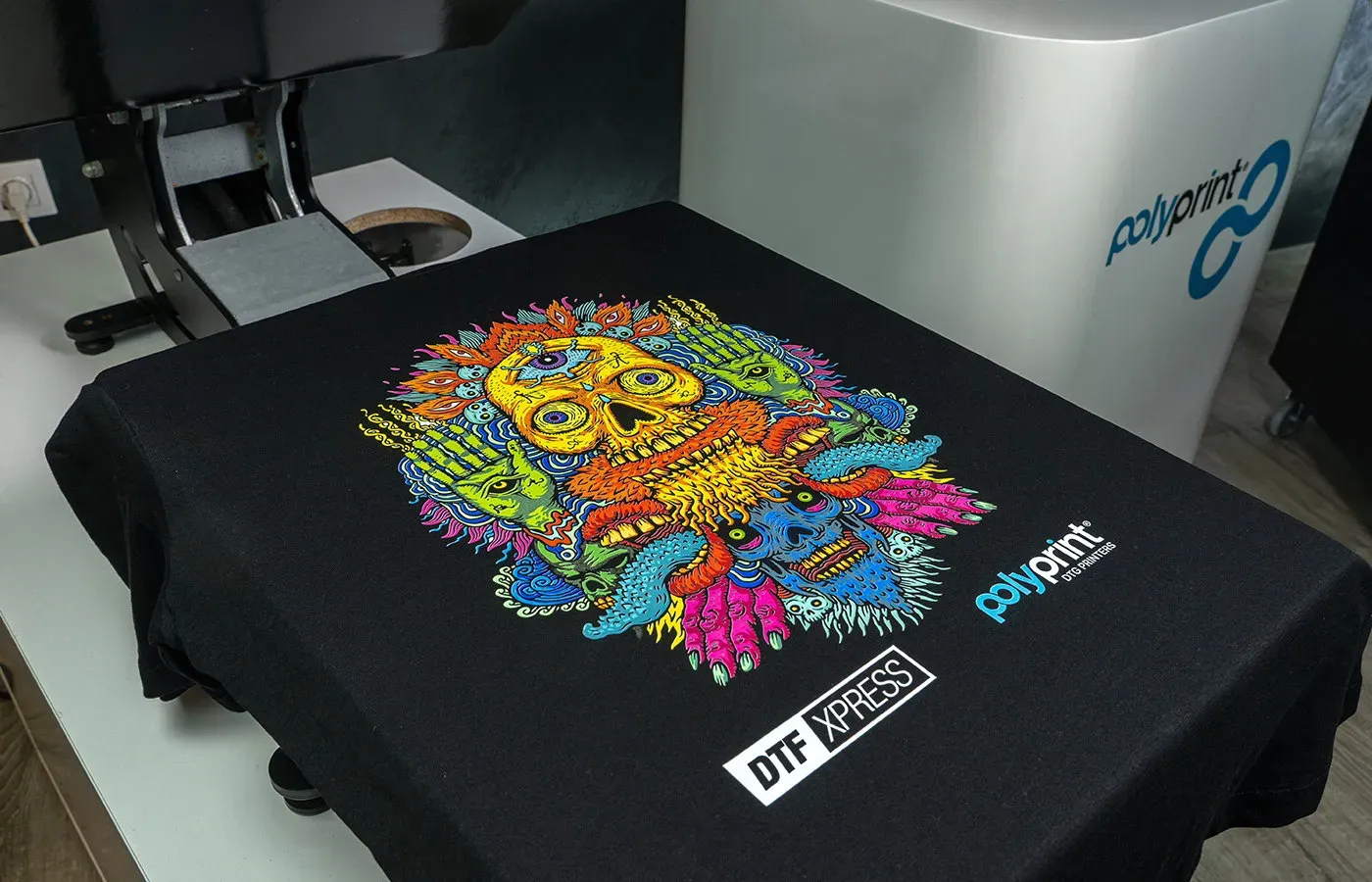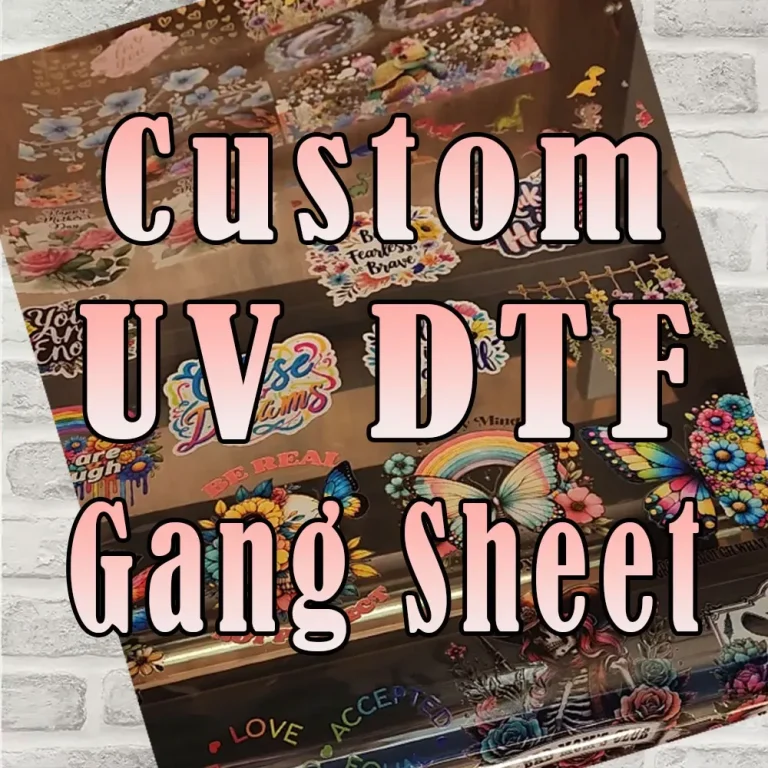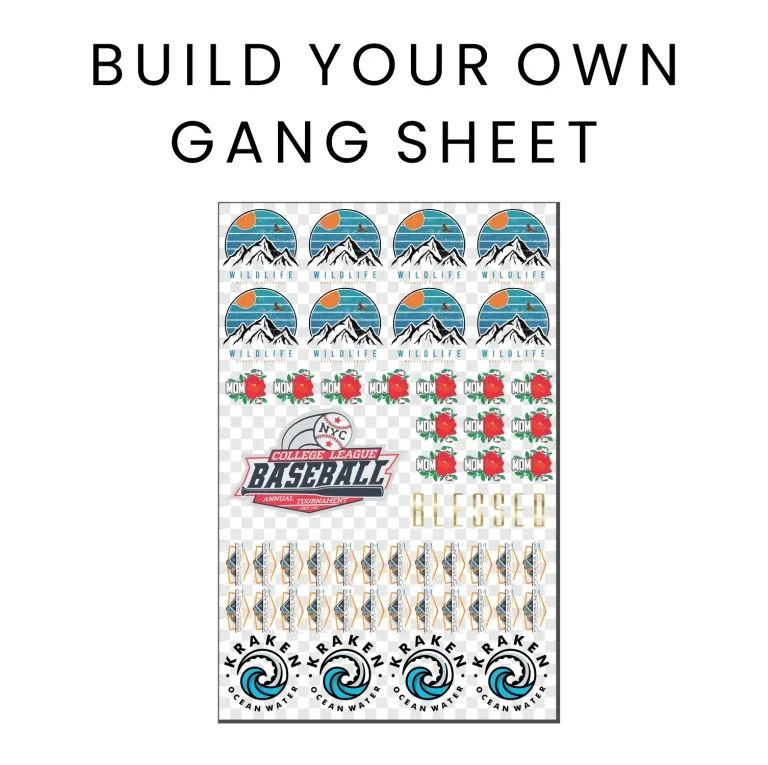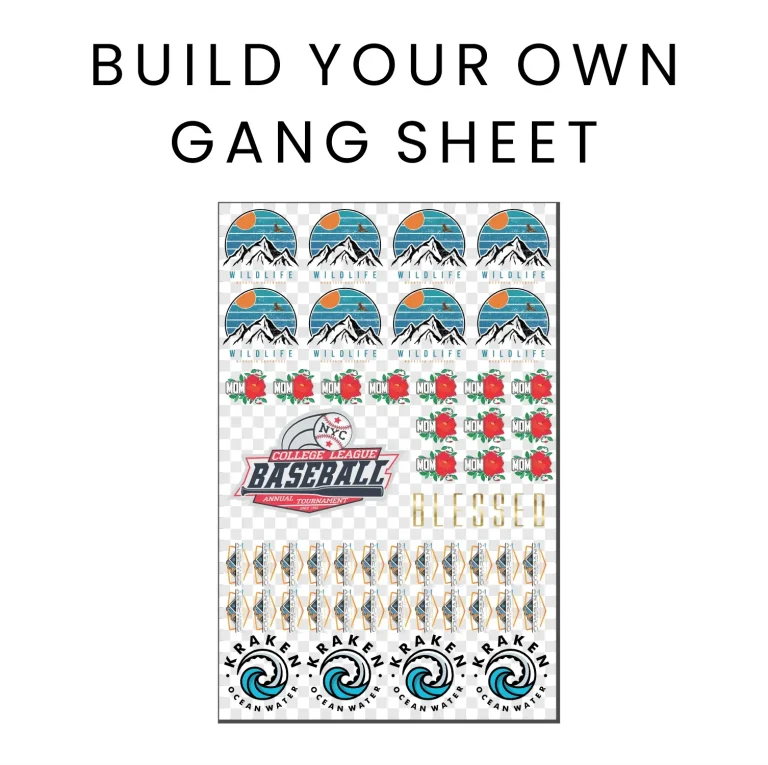DTF Printing 101: Everything You Need to Know to Get Started
DTF printing, or Direct-to-Film printing, is at the forefront of modern textile design, offering a fresh approach to custom apparel printing. This innovative technique utilizes a unique DTF printing process that permits stunning color vibrancy on a variety of fabrics, making it a game changer for businesses and craft enthusiasts alike. By harnessing eco-friendly printing inks, DTF ensures that your designs not only look good but also align with sustainable practices. Its adaptability leads to numerous DTF printing applications, from T-shirts to tote bags, setting the stage for limitless creativity. Join us as we delve into the transformative potential of DTF printing and explore how you can leverage this cutting-edge method in your projects.
Direct-to-Film printing, commonly known as DTF printing, represents a leap forward in the world of textile customization. This technique caters to those in search of efficient custom apparel solutions, showcasing the benefits of high-quality, versatile designs that stand out. Utilizing state-of-the-art printing technology, the DTF approach allows for the application of intricate designs using environmentally friendly materials. With a wide range of practical applications—from trendy clothing to promotional merchandise—this printing method is gaining traction among both established brands and new entrepreneurs. Embrace the future of fabric printing by exploring the unique features of this remarkable process.
Understanding the Basics of DTF Printing
DTF printing, short for Direct-to-Film printing, represents a groundbreaking technology that has transformed how custom designs are printed onto textiles. Unlike traditional methods such as screen printing, DTF printing does not require extensive setup or specialized knowledge, allowing businesses and hobbyists alike to produce stunning designs quickly and efficiently. At its core, the process utilizes specialized transfer films and eco-friendly inks, resulting in high-quality, durable prints on a variety of fabrics.
One of the remarkable features of the DTF printing process is its ability to produce vibrant, full-color images with incredible detail. This aspect is essential for custom apparel printing, as it enables designers to bring their visions to life with true-to-tone colors that last through multiple washes. By leveraging advanced technology, DTF printing has gained popularity for its versatility, making it suitable for a wide array of materials, from cotton to polyester blends.
The DTF Printing Process: How It Works
The DTF printing process involves several straightforward steps that can be mastered by anyone looking to create custom designs. First, a digital design is crafted using graphic design software, ready to be printed onto a special transfer film. This film serves as the canvas for the design, ensuring it is adequately prepared for a successful transfer to various fabric types.
Once the design is ready, it is printed onto the transfer film using a DTF printer. The key to achieving a successful print lies in the use of eco-friendly DTF inks, which not only create breathtaking colors but also reduce the environmental impact typically associated with textile printing. After printing, adhesive powder is applied to the wet ink, and the design is cured using heat, allowing for a strong bond when the film is transferred to the fabric.
Benefits of Using DTF Printing for Custom Apparel
DTF printing offers a multitude of benefits, making it an excellent choice for custom apparel solutions. One primary advantage is its cost-effectiveness, particularly for small runs and one-off items. Unlike traditional screen printing that incurs significant setup costs, DTF allows creators to print as needed without financial constraints, promoting sustainable production practices.
Moreover, the quality of DTF prints is outstanding. With high-resolution output and vibrant colors, the final products maintain their brilliance even after multiple washes. This durability is essential for business owners who want to provide their customers with reliable and long-lasting custom apparel. As the demand for personalized items grows, the flexibility and simplicity of DTF printing become increasingly attractive for entrepreneurs and crafters alike.
Eco-Friendly DTF Printing Materials and Practices
In today’s eco-conscious world, the demand for sustainable printing solutions is on the rise. DTF printing stands out by utilizing eco-friendly printing inks, primarily water-based, which reduce harmful environmental impacts compared to traditional solvent-based inks. These inks not only yield vibrant colors but also align with the values of consumers who are increasingly seeking green alternatives in their purchasing decisions.
By choosing DTF printing, businesses can promote their commitment to sustainability, attracting environmentally aware customers. Moreover, the efficiency of the DTF printing process minimizes waste — both in materials and energy — further solidifying its reputation as an eco-friendly option in the custom apparel printing industry. As trends shift towards more sustainable practices, DTF printing is well-positioned to meet these demands.
Versatility of DTF Printing Applications
One of the most compelling advantages of DTF printing is its incredible versatility. Suitable for a wide variety of fabrics, including cotton, polyester, and blends, DTF offers crafters the flexibility to create an array of products, from T-shirts and hoodies to bags and hats. This adaptability is a significant draw for businesses looking to expand their merchandise offerings without major investment.
Additionally, DTF printing caters to artistic expressions, allowing designers to create unique custom apparel that stands out in a saturated market. Whether for fashion, promotional merchandise, or personal projects, the potential applications of DTF printing are virtually limitless, encouraging a dynamic and creative marketplace. This versatility makes it an appealing choice for those seeking to innovate within the custom printing space.
Recent Innovations in DTF Printing Technology
As technology continues to advance, so does the field of DTF printing. Recent innovations have improved the efficiency and reliability of DTF printers, leading to faster production times and higher quality outputs. These enhancements empower businesses and artisans to meet growing demand without compromising on quality. Innovations in software tied to DTF printing also allow for more sophisticated design alterations and easier integration into existing production workflows.
Furthermore, recent trends emphasize the personalization aspect of DTF printing, with consumers increasingly seeking customized apparel that reflects their unique style. The latest printing technology allows for quick adaptation to individual requests, whether they involve intricate designs or simple monograms. As the landscape of DTF printing evolves, it’s clear that those who embrace these innovations will be at the forefront of the competitive custom apparel market.
Frequently Asked Questions
What is the DTF printing process and how does it work?
The DTF printing process, or Direct-to-Film printing, involves printing designs onto a special transfer film using eco-friendly inks. The printed film is then coated with adhesive powder before being cured with heat. Finally, it is applied to the fabric using a heat press, resulting in high-quality, durable prints on various materials.
What are the advantages of using DTF printing for custom apparel?
DTF printing offers several advantages for custom apparel, including versatility to print on various fabrics, cost-effective production for small runs, and high-quality, vibrant outputs. Additionally, the user-friendly process allows beginners to achieve professional results with minimal effort.
Can DTF printing be used for eco-friendly printing projects?
Yes, DTF printing is an excellent choice for eco-friendly projects as it utilizes water-based inks that are less harmful to the environment compared to traditional inks. This makes DTF printing suitable for those looking to create sustainable custom apparel and merchandise.
What types of materials are suitable for DTF printing applications?
DTF printing can be applied to a wide range of materials, such as cotton, polyester, blends, and more. This versatility makes it perfect for producing custom designs on T-shirts, hoodies, bags, and other fashion items.
How does DTF printing compare to other printing techniques?
Compared to traditional methods like screen printing, DTF printing is often more cost-effective for smaller quantities, offers greater color vibrancy, and is simpler to execute. It also enables customization and intricate designs without the need for extensive setup.
What recent trends are emerging in DTF printing technology?
Recent trends in DTF printing include a growing emphasis on eco-friendly practices using sustainable inks, increasing consumer demand for personalized apparel, and technological advancements that enhance print speed and reliability, making DTF printing more accessible to creators.
| Aspect | Details |
|---|---|
| What is DTF Printing? | A printing process where designs are printed onto special film and transferred to fabrics using eco-friendly inks. |
| Key Components | 1. Transfer Film: Base for printing. 2. DTF Inks: Eco-friendly, vibrant colors. 3. Adhesive Powder: Bonds design to fabric during transfer. |
| Process Steps | 1. Create your design. 2. Print on film. 3. Apply adhesive powder. 4. Cure the adhesive with heat. 5. Transfer to the fabric. |
| Advantages | – Versatile for various materials. – Cost-effective for small runs. – High-quality prints. – User-friendly process. |
| Applications | – Custom Apparel – Merchandise – Art and Craft Projects |
| Recent Trends | – Eco-friendly practices. – Increased demand for personalization. – Technological advancements in printer efficiency. |
Summary
DTF Printing stands out as a revolutionary method for applying custom designs to textiles, characterized by its user-friendly approach and eco-friendly components. This printing technique not only enables vibrant prints on a variety of fabrics but also addresses the growing demand for custom and sustainable solutions in the fashion and merchandising industries. As the technology advances, DTF Printing is set to become the go-to choice for businesses and individual crafters alike, offering both creativity and cost efficiency.







